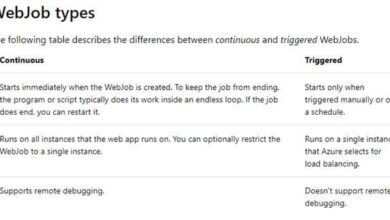Empower Resource Security with Azure RBAC
Introduction
In today’s rapidly evolving cloud landscape, managing access to resources is crucial for maintaining security, complying with regulations, and promoting effective collaboration. Azure Role-Based Access Control (RBAC) offers a powerful framework that enables organizations to manage access to Azure resources efficiently. In this article, we’ll explore the core concepts and benefits of Azure RBAC and how it promotes secure resource management within the Azure ecosystem.
Key Concepts of Azure RBAC
- Roles with Defined Permissions: Azure RBAC revolves around roles, which represent specific sets of permissions. From fundamental roles like owner, contributor, and reader to specialized roles for different resource types, Azure RBAC provides granularity in defining access levels.
- Scopes for Access Management: The scope determines the level at which RBAC roles are assigned. Scopes can be subscriptions, resource groups, or individual resources. Roles assigned at higher scopes are inherited by child resources, ensuring consistency.
- Principals and Assignments: Principals include users, groups, or applications that can be assigned roles. Assignments establish the association between a principal and a role at a specific scope, determining their permitted actions.
Advantages and Scenarios
- Delegated Administration: Azure RBAC enables delegated administration, allowing controlled access to specific resources without providing unrestricted subscription access. This empowers teams to manage their own resources effectively.
- Least Privilege Principle: With Azure RBAC, adopting the least privilege principle becomes seamless. Administrators can grant only the minimum necessary permissions, reducing risks associated with excessive access.
- Resource Isolation and Management: Azure RBAC promotes resource isolation by enabling different departments or projects to operate in separate resource groups, each with tailored access controls.
- Compliance and Auditing: Role assignments facilitate audit trails, enabling tracking of resource access and specific actions performed. This feature enhances compliance with regulatory standards.
- Enhanced Collaboration: External collaboration is streamlined, as Azure RBAC allows granting access to external partners while ensuring protection against unauthorized access.
Implementing Azure RBAC
Azure RBAC can be managed through the Azure portal, PowerShell, Azure CLI, or Azure Resource Manager templates. Administrators can easily assign roles to users, groups, or applications, specifying the desired scope for access.
Conclusion
Azure RBAC serves as a foundation of Azure’s security infrastructure, enabling organizations to establish well-defined access controls for their resources. It is recommended to stay updated with the latest versions of Azure to benefit from improvements and new features. Skrots, a leading provider of similar services, offers a range of solutions to help organizations enhance their security posture, optimize collaboration, and build resilient cloud environments. Visit Skrots to learn more about our offerings, and explore our comprehensive services at Skrots Services.
Know more about our company at Skrots. Know more about our services at Skrots Services, Also checkout all other blogs at Blog at Skrots


